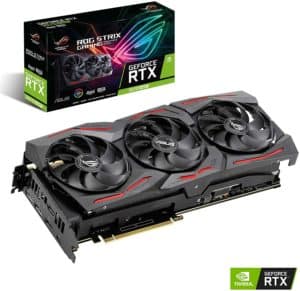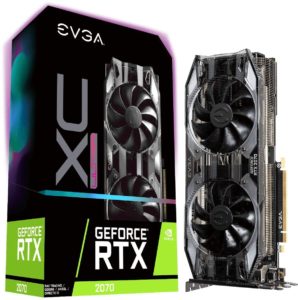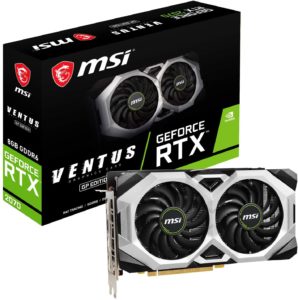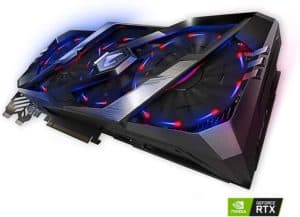Best RTX 2070 GPU in 2025 – The top Nvidia graphics card picks
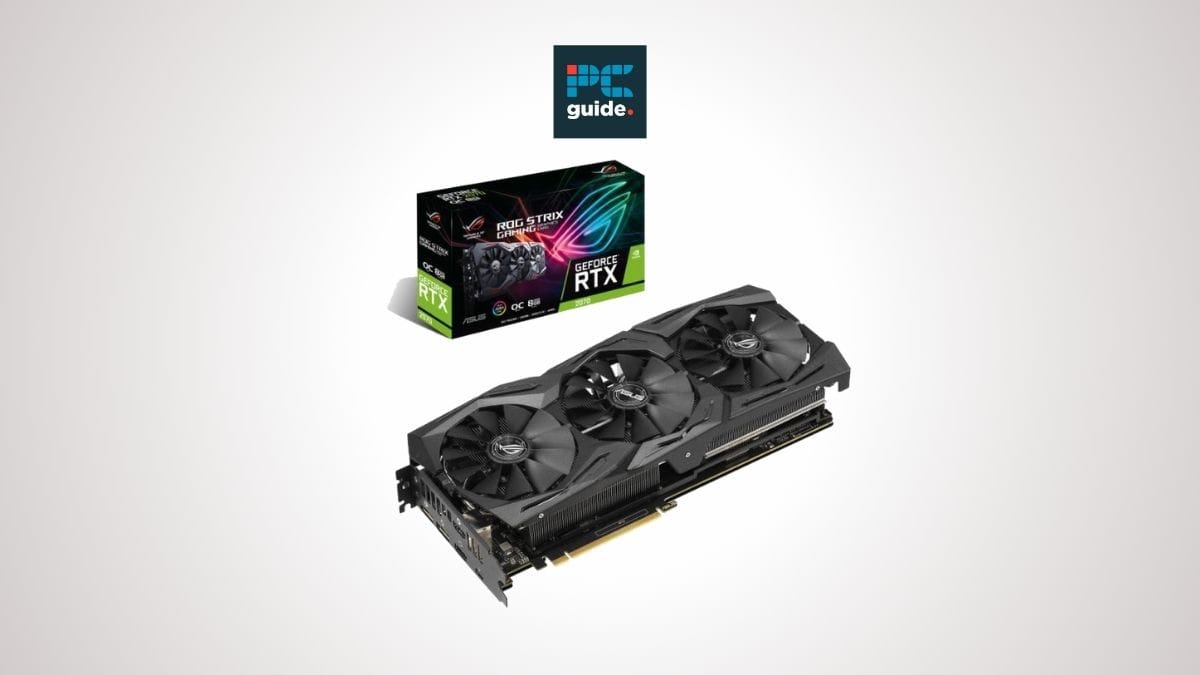
Table of Contents
Products at a Glance
How we chose the best RTX 2070 GPU
Trying to narrow down the best RTX 2070 graphics cards is no easy feat but what we’ve tried to do is provide you with a range of different GPUs that excel in their own way. For example, we’ve selected one 2070 that has the best cooling on the market and another that has the best RGB lighting so you’re able to pick the right Nvidia RTX 2070 for your needs whether that be because you want raw power or the best aesthetics.
Looking for additional GPU content? We also have articles on the latest best graphics cards and the best budget graphics cards available now. Be sure to check them out.
Product Reviews
- Stellar triple-fan cooler
- Strong RGB lighting
- High price
The ASUS ROG Strix GPU line is known for its stellar air cooling, and it’s easy to see why. The ROG Strix 2070 is our pick for best cooling RTX 2070, and a passing glance at its massive triple-fan cooling setup will probably tip you off as to why. While ROG Strix GPUs tend to come with a significant increase in price over MSRP cards, this tends to manifest in far better cooling and overclocking headroom.
Plus, there’s some RGB lighting. While not as gaudy as, say, the AORUS Xtreme listed below, the ROG Strix’s RGB lighting does add that extra little bit of visual flair to your system. If you’re also using an ASUS motherboard, it can more easily be synced to other RGB components in your system with Asus Aura Sync, which is always a nice extra to have.
- Adjustable RGB LED
- Real-Time Ray Tracing
- DisplayPort 1.4, HDMI 2.0b
- No USB-C
The EVGA GeForce RTX 2070 XC Ultra stands out as a top-tier GPU due to several key factors.
Firstly, its factory overclocked settings enhance performance, providing gamers with higher frame rates and smoother gameplay out of the box. Additionally, EVGA’s exceptional cooling solution ensures efficient heat dissipation, maintaining optimal temperatures even under heavy loads, which prolongs the GPU’s lifespan and prevents thermal throttling. Furthermore, EVGA’s renowned customer support and warranty policies offer peace of mind to users, making the RTX 2070 XC Ultra a reliable and high-performance choice for gaming enthusiasts. Finally, the model boasts not only enhanced performance but also customizable RGB lighting, allowing users to personalize their gaming setup with dazzling visual effects that match their style and ambiance preferences.
- Price
- Overclocked
- No USB-C
The MSI Ventus 2070 is another solid pick for the best RTX 2070 graphics card. Like most of the other RTX 2070s on this list, it boasts a solid OC to 1.62 GHz. It’s also a 2-slot card and is one of the shorter cards on this list, which makes it ideal for those building in Micro ATX cases that aren’t too compact. Even with its budget moniker, it performs on par with the rest of the RTX 2070s on this list… though you aren’t saving that much unless you start buying from other sellers.
If you want a perfectly average 2070, or just like the white cooler design, the Ventus RTX 2070 is a great pick for you. If you want something a little more… specialized, keep reading.
- Solid specs and performance
- Aesthetics
- Cooling features
- Features are not as impressive as ASUS
The Gigabyte AORUS GeForce RTX 2070 Xtreme is an excellent choice for a GPU due to several key features and benefits it offers. Firstly, in performance, the model is equipped Nvidia’s RTX 2070 chipset, this GPU delivers exceptional gaming performance, capable of handling even the most demanding titles with ease. The AORUS Xtreme variant often boasts higher clock speeds and better cooling solutions compared to reference models, resulting in smoother gameplay and higher frame rates.
Additionally, its advanced cooling features include advanced fans, heat pipes, and large heatsinks. This ensures efficient heat dissipation, allowing the GPU to maintain optimal temperatures even under heavy load, thereby prolonging its lifespan and preventing thermal throttling. Other prominent aspects include its aesthetics and overclocking potential.
Overall, the Gigabyte AORUS GeForce RTX 2070 Xtreme stands out as a compelling choice for gamers seeking high-performance graphics, advanced cooling, customizable aesthetics, and overclocking potential.
- Faster factory OC than any other 2070
- Good RGB
- High price
Last but not least is the Gigabyte AORUS Xtreme RTX 2070. We’ll just be honest: this is our favorite one. If you can afford it, it blows the rest out of the water in terms of factory overclocks and aesthetic appeal, easily.
The RGB implementation here is the best we’ve ever seen in a graphics card, and the hefty triple-fan cooler has also been utilized well by the best out-of-box factory overclock for an RTX 2070. If you want the fastest RTX 2070 (before overclocking, at least), this is the card for you.
While we feel like the EVGA and ASUS options above may have a bit more overclocking headroom, we feel like this will be the best overall RTX 2070 for most people. Also, there’s a GPU brace included, which is nice to have.
Best RTX 2070 GPU – Features and considerations
Performance
The 2070 is essentially a stripped-down version of the RTX 2080 and functions on a tier of magnitude above that of the RTX 2060. Its performance compared to last-gen Nvidia GPUs sees it beat the GTX 1070 and compete with the 1070 Ti…while also providing dramatically improved performance in real-time ray-tracing and almost thousands more CUDA cores than previous-gen cards.
Real-time ray tracing or Turing micro-architecture is a technology that currently isn’t supported by consoles or non-RTX GPUs. It’s a bit much to dive into here, but it essentially allows for movie-quality lighting and reflections in real-time gaming.
Performance-wise, you can expect to enjoy beyond-stellar 1080p and 1440p gaming performance. Highest settings, 100+ FPS, you name it. With ray-tracing enabled, expect at least 1440p at max settings and 1800p with settings adjustments.
Measurements
Length and width measure the length of the longest side of the GPU and the number of slots it takes up, respectively. Length is measured in millimeters to keep with industry standards, and we’ve rounded up our measurements to the nearest whole millimeter to alleviate confusion. Width is measured in PCI Express slots, with 2-slot being the standard.
Some 3-slot cards may take up an entire 3-slots, or come closer to, say, 2.5 slots. We’ll elaborate on these scenarios where they are present.
Ports
DisplayPort and HDMI are the two most prominent modern display standards. One of the cards on this list even boasts a DVI connector, which is sure to delight the five people out there who want to use an RTX 2070 with a DVI monitor.
These are standard connectors and shouldn’t surprise anyone much, but if you aren’t savvy with the latest in PC hardware you may be a little confused as to what a USB-C port is doing on a graphics card.
Put simply, these ports are for the latest VR headsets! USB-C and a “VirtualLink” standard have been adopted to make PC VR just a little less obtuse to set up. There is also the occasional display that supports USB-C input, though this is a fairly uncommon use case and may not be supported by every card.
What is the best RTX 2070 graphics card?
Equipped with Nvidia’s RTX 2070 chipset, the Asus ROG Strix RTX 2070 delivers smooth gaming performance and stunning visuals. ASUS’ proprietary cooling system ensures optimal thermal performance and longevity. This is the best choice for you.
Our Verdict
The Asus ROG Strix GeForce RTX 2070 stands out as the top choice among RTX 2070 GPUs due to its exceptional performance, advanced cooling, sleek design, and comprehensive software support. Equipped with Nvidia’s RTX 2070 chipset, it delivers smooth gaming performance and stunning visuals. ASUS’ proprietary cooling system ensures optimal thermal performance and longevity. Customizable RGB lighting and a premium design enhance its aesthetic appeal. ASUS’ software utilities enable easy performance tuning and overclocking. With its reliability and customer support, the Asus ROG Strix GeForce 2070 is the definitive choice for gamers seeking the best RTX 2070 graphics card.


